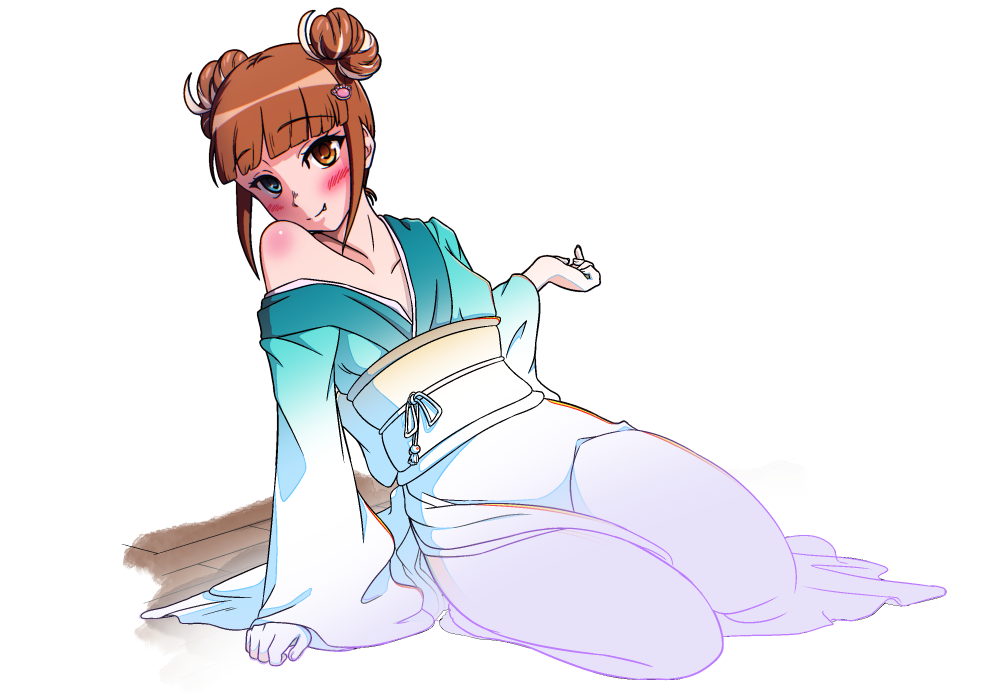
Benkyou
Benkyou (勉強) means study in japanese.
Do not worry each term we will see will be fully explained as clear as possible.
You can also see all the japanese animation terms on the Glossary page.
First of all, I will ask you a question:
Why do you want to do animation?
Of course you don’t need to answer to me, it is for your own mindset, to prepare yourself and you motivation into animation.
Introduction
Let’s get deep in the subject now, roughly speaking, the process of an anime production is:
- Concept and Scriptwriting
- Character and Background Design
- Storyboard (sometimes come with an Animatics)
- Layout – First Key animation (Ichigen known as 1原 or 一原 or 第一原画) → Layout check
- Genga – Second Key animation (Nigen known as 2原 or 二原 or 第二原画) → Genga check
- In-between → In-between check
- Coloring (finishing) → Coloring check
- Sound Design
- Post-Production
Before there was not much outsourcing and much of the work was basically done in-house. The veteran were doing the animation materials while teaching animation to young staff.
The Genga (原画 also called as Original Drawing) was made by the experienced staff while the Douga (動画 also known as inbetweener or cleaner) was done by the newcomer with not much experiences.
In-house animation is generally more effective. In general, none of the in-house animator staff had previous animation experience (although some had some experience in classes as students). An animation studio is not a place to train animators, though they have good eyes to select new employees.
Even though the newcomer do not have experience in animation, everyone was serious, many of them like anime, and many of them habitually draw character pictures, perhaps because of this, they quickly improve in a short period time.
On a different note, you can refer to many anime original art books.
You will shortly notice and have the impression that there is not much room for you as an animator to think about the inbetween. As an animator, I am pretty sure that you want to have perfect control over the animation, and it is probably unavoidable in order to improve the quality of the movement.
In the first place, inbetweener is the less visible position than colorist in the industry.
There are key animators (原画マン Gengaman), animation director (作監 Sakkan), and of course the color designers (彩色設計 Saishiki sekkei) whose names ofter appear in the social media, magazines and other stuff. But there are hardly any names you see regularly about inbetweener. Only a few people openly express the importance of inbetween…
It used to be a gateway to become an animator. Some people think it will disappear in the future… Maybe because of AI, or even automatisation.
Most newcomers to the industry are now recruited through SNS (Social Networking Services), they mostly start as Gengaman unlike normal studio entry, and unfortunately many people make mistakes in their production.
Unfortunately, they receive no feedback from the studio they work with and they suddenly find themselves blacklisted without a word.
*Kindly understand that the content of this website is based on my experience and each production company has different methods. There is no universal method for creating animation, although most lines of work are similar.
Disclaimer
This website will summarizes basic animation techniques and also some advances animation techniques. Even if you are professional animator you can probably find some useful information. If there is any concern about a page or a detail in the website, feel free to contact us. If you want to become an animator in the future or are thinking about entering an animation school, this website may be of some help for you. In addition, it would be considered to look though various reference and technical books, but especially the book name “Encyclopedia of Basic Knowledge of Animation (by Sachiko Kamimura)”. This is not a technical book but it summarizes the essential knowledge for animators in an easy-to-read format.
I hope this website will be useful for people who want to create character materials, animations, game and app development. I also hope it will help for project leaders to understand animation production. Kindly understand that it takes effort, time, and money to create something good.
Here a summary of the pages for the process of animation. I sincerely hope you will enjoy it:
- Tools
- Manners & Rules
- Storyboard
- Key Animation
- Timesheet
- Animation Check
- Tracing & Cleanup
- Step for Creating Videos
- Inbetween Techniques
- Lip Synchro
- Example 1: Blink
- Example 2: Turn around
- Example 3: Walking
- Example 4: Running
- Example 5: Wave sending ~ bending
- Example 6: Effects
- Collection of examples
- Tips
- Roles in the industry
- Glossary
- Support Page
Note that this list may change in the future.